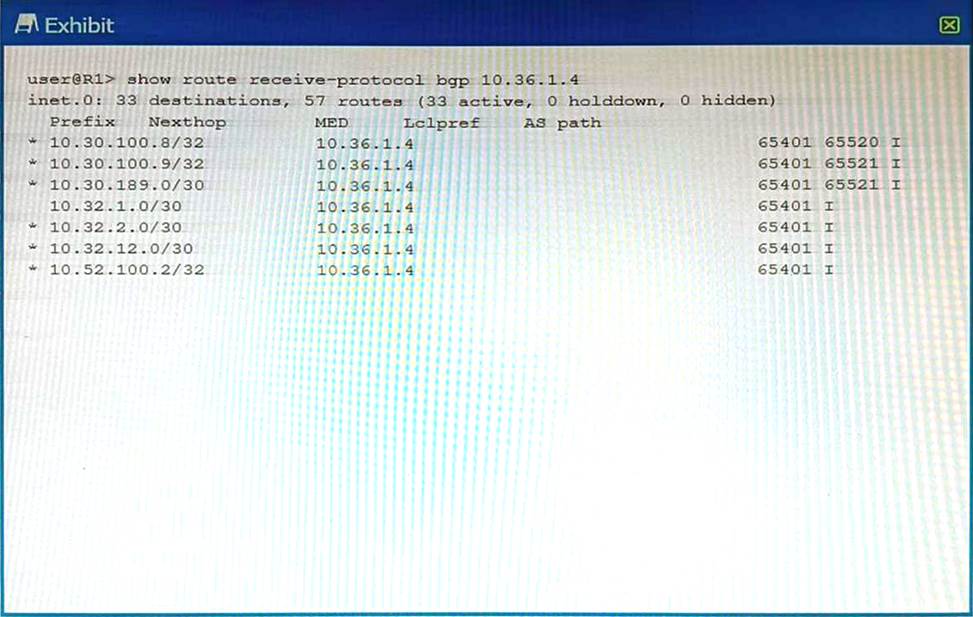- All Exams Instant Download
Which two statements are correct about the output shown in the exhibit?
Exhibit.

You want to verify prefix information being sent from 10.36.1.4.
Which two statements are correct about the output shown in the exhibit? (Choose two.)
A . The routes displayed have traversed one or more autonomous systems.
B . The output shows routes that were received prior to the application of any BGP import policies.
C . The output shows routes that are active and rejected by an import policy.
D . The routes displayed are being learned from an I BGP peer.
Answer: AB
Explanation:
The output shown in the exhibit is the result of the command “show ip bgp neighbor 10.36.1.4 received-routes”, which displays all received routes (both accepted and rejected) from the specified neighbor.
Option A is correct, because the routes displayed have traversed one or more autonomous systems. This can be seen from the AS_PATH attribute, which shows the sequence of AS numbers that the route has passed through. For example, the route 10.0.0.0/8 has an AS_PATH of 65001 65002, which means that it has traversed AS 65001 and AS 65002 before reaching the local router.
Option B is correct, because the output shows routes that were received prior to the application of any BGP import policies. This can be seen from the fact that some routes have a status code of “r”, which means that they are rejected by an import policy. The “received-routes” keyword shows the routes coming from a given neighbor before the inbound policy has been applied. To see the routes after the inbound policy has been applied, the “routes” keyword should be used instead.
Option C is incorrect, because the output does not show routes that are active and rejected by an import policy. The status code of “r” means that the route is rejected by an import policy, but it does not mean that it is active. The status code of “>” means that the route is active and selected as the best path. None of the routes in the output have both “>” and “r” status codes.
Option D is incorrect, because the routes displayed are not being learned from an IBGP peer. An IBGP peer is a BGP neighbor that belongs to the same AS as the local router. The output shows that the neighbor 10.36.1.4 has a remote AS of 65001, which is different from the local AS of 65002. Therefore, the neighbor is an EBGP peer, not an IBGP peer.
Latest JN0-351 Dumps Valid Version with 110 Q&As
Latest And Valid Q&A | Instant Download | Once Fail, Full Refund
Subscribe
Login
0 Comments
Inline Feedbacks
View all comments

